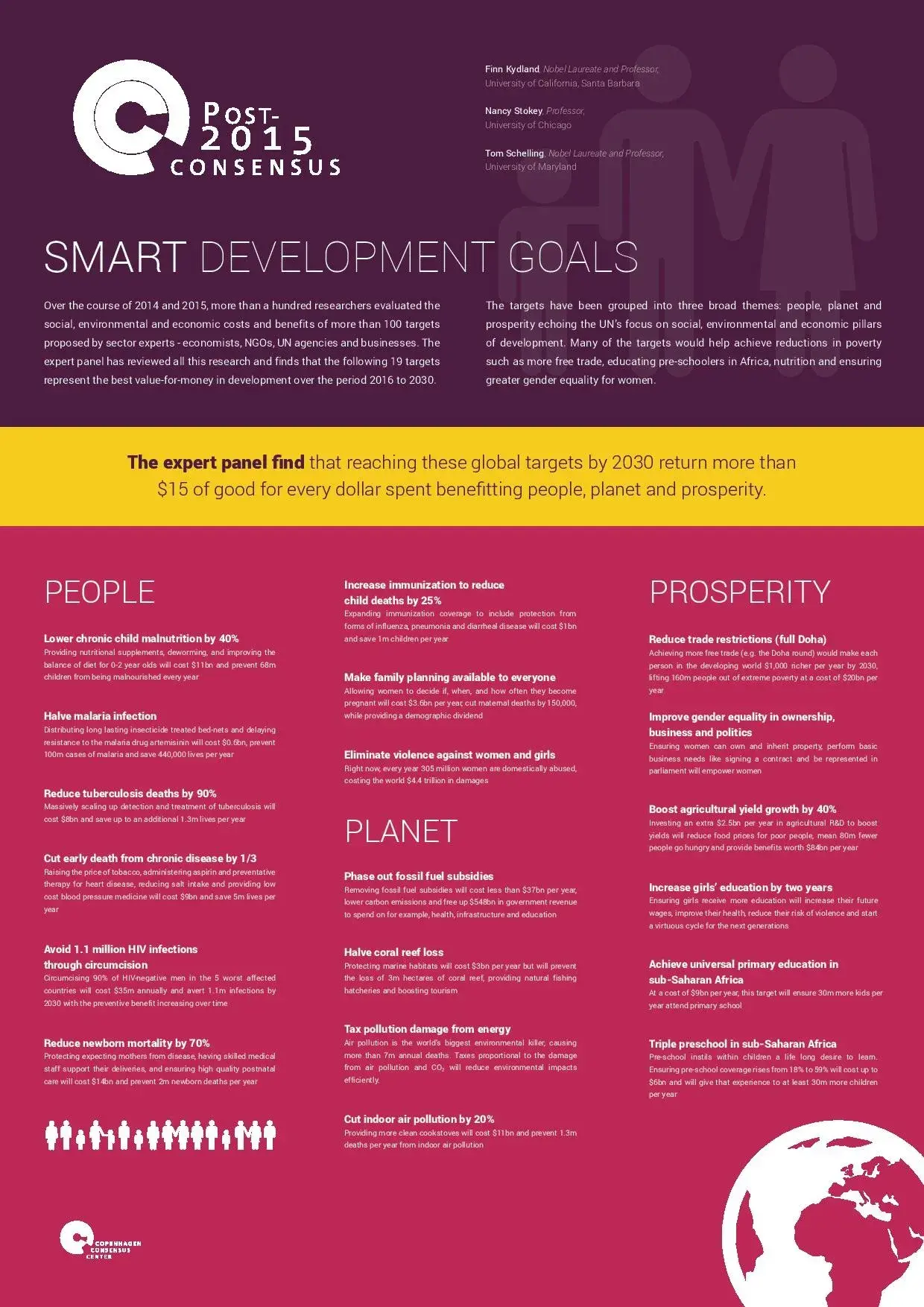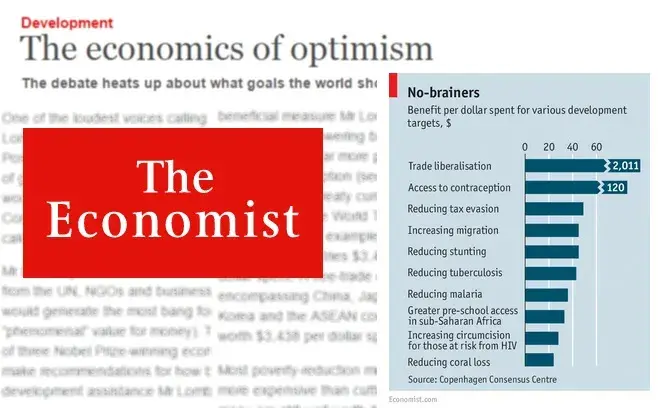Chronic Diseases: What's the smartest SDG target?

People often assume that infectious diseases like diarrhea, tuberculosis, AIDS, malaria and ebola are the biggest threats in the developing world. That is no longer true.
For the first time in history, more people in the developing world are dying from strokes and heart attacks than infectious diseases. Combined, these non-communicable diseases or NCDs – cause almost two-thirds of all deaths in the developing world, about 23 million each year.
The good news is that there are tremendous ways to help, which could avoid up to five million premature (before age 70) deaths each year.
As reported in The Guardian, raising tobacco prices through taxation is one such intervention. There is good international evidence to show that increasing prices by 125% would cut consumption in half and save 2.5m lives per year. Every dollar spent would give benefits valued at $22 and it would raise $2.5bn in revenue to spend on other health measures.
About a billion people, including 45% of African adults, suffer from high blood pressure, causing 9 million deaths per year. Fortunately, the cost of diagnosis and cheap hypertension medication for medium and high-risk patients would only be $500 million, or about $2.50 per person annually. This would avoid 770,000 premature deaths each year and every dollar invested would do $47 of good.
Additionally, one of the simplest ways to reduce high blood pressure is to lower salt intake. Reducing salt intake by 30% is reckoned to avoid 815,000 premature deaths. It would also be a great use of resources, paying back $39 for every dollar spent.
You can read the entire paper here and download the one page PDF here.
The smartest targets for the post-2015 development agenda
What are the smartest targets for the post-2015 development agenda?
In a world of limited resources, we can’t do everything, but how should we prioritize? The Copenhagen Consensus Center provides information on which targets will do the most social good relative to their costs. The final decision on choosing goals will definitely rest on a number of factors, not just economics – but knowing the costs and benefits provides an important piece of information.
The Post-2015 Consensus brought together, renowned experts from the UN, NGO and private sectors with 60 teams of economists to produced 100+ research papers to establish the most effective targets for the post-2015 development agenda within 22 core issue areas: Air Pollution, Biodiversity, Climate Change, Conflict & Violence, Data for Development, Education, Energy, Food Security, Gender Equality, Governance & Institutions, Health: Chronic Diseases, Health: Health Systems, Health: Infant Mortality & Maternal Health, Health: Infectious Diseases, Infrastructure, Illicit Financial Flows, Nutrition, Population & Demography, Poverty, Science & Technology, Trade, and Water & Sanitation.
An Expert Panel including two Nobel Laureates has reviewed all of this research and identified 19 targets that represent the best value-for-money in development over the period 2016 to 2030.
Only have three minutes? Watch our introduction video to the Post-2015 Consensus project.

Making prioritization a factor in the post-2015 debate
An overview of Copenhagen Consensus' ground-breaking research which is shaping the thinking for the 193 governments about to prioritize the smartest development goals for 2016-2030. If you've just read the article in The Economist you might be interested in exploring more about our project, and the research we've undertaken so we have put together an online supplement with more in-depth information.


